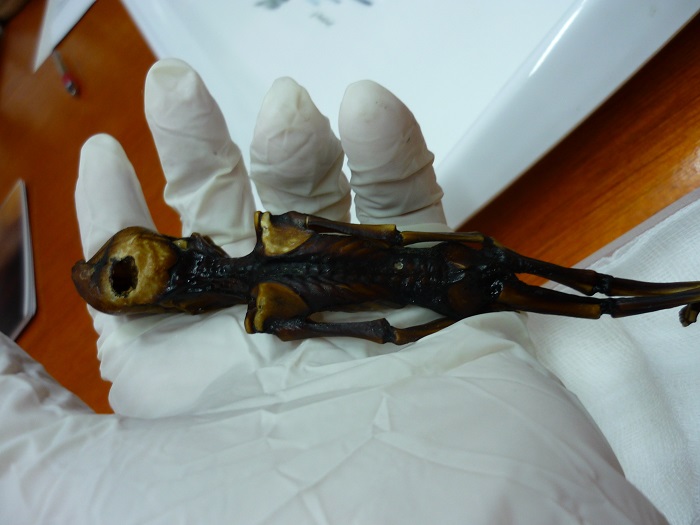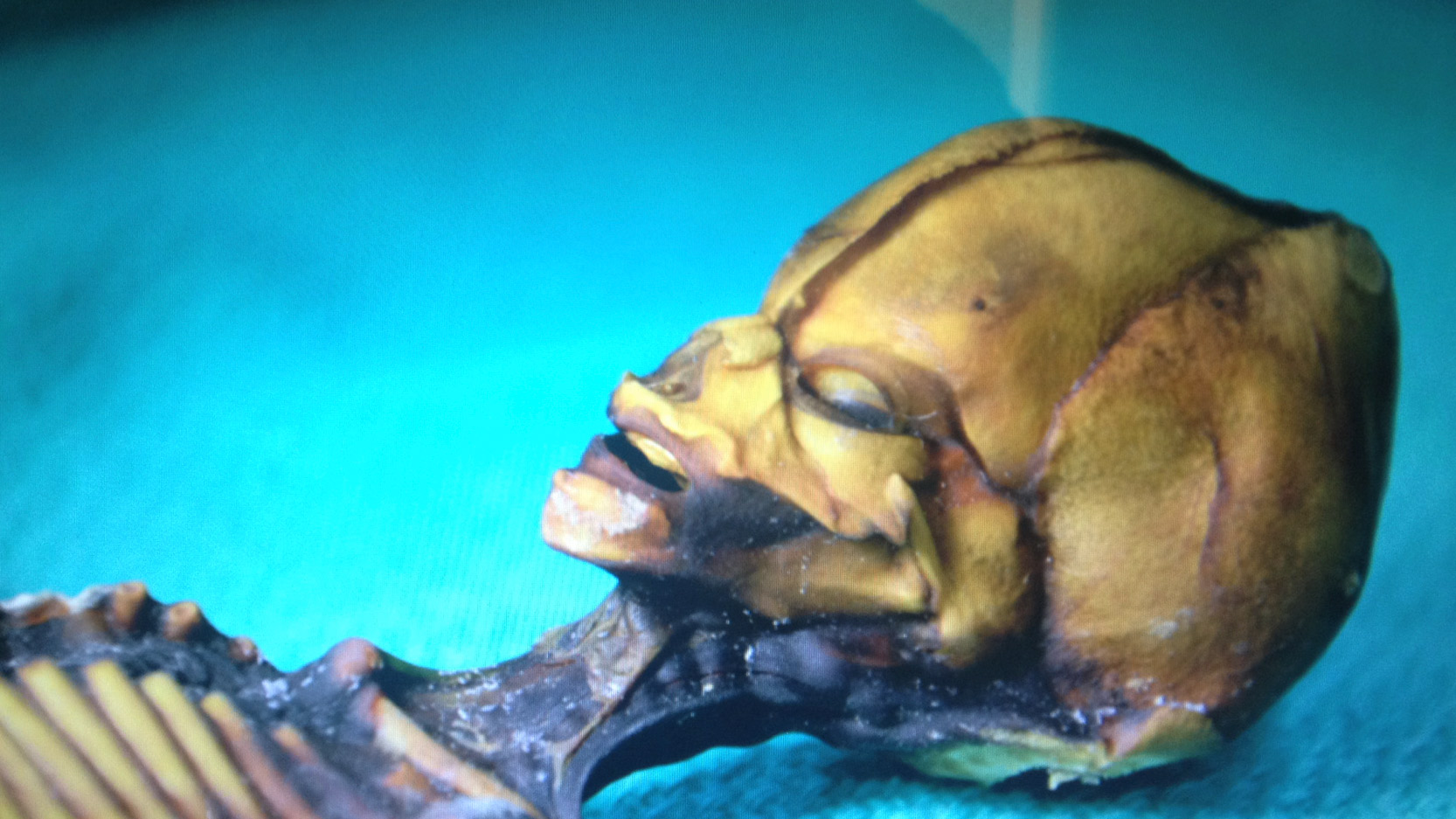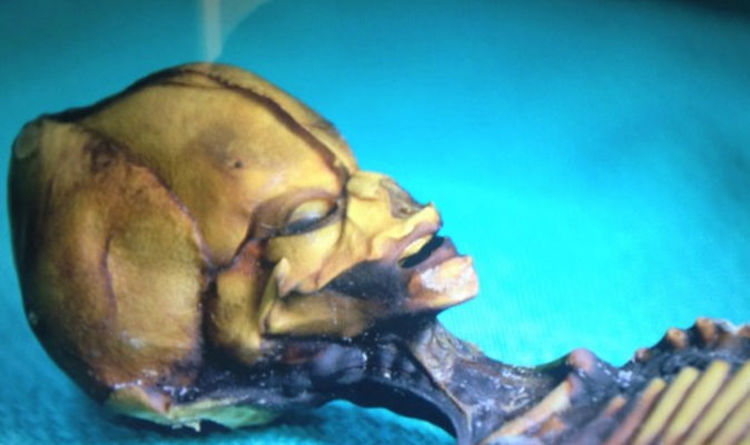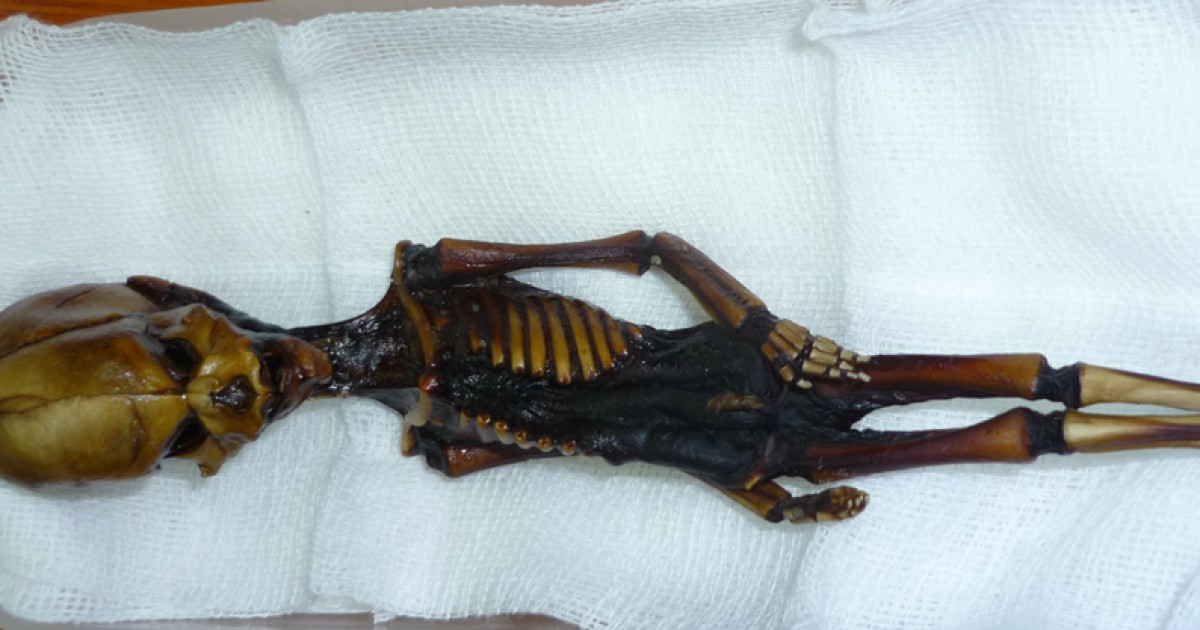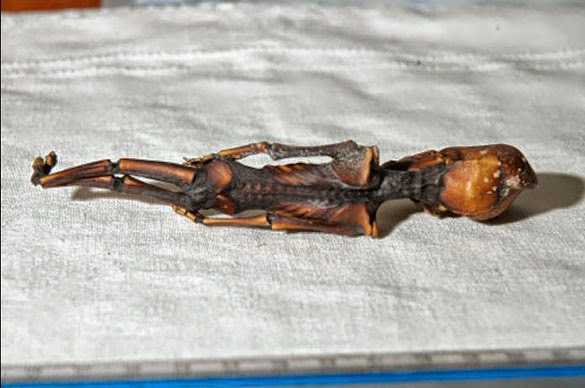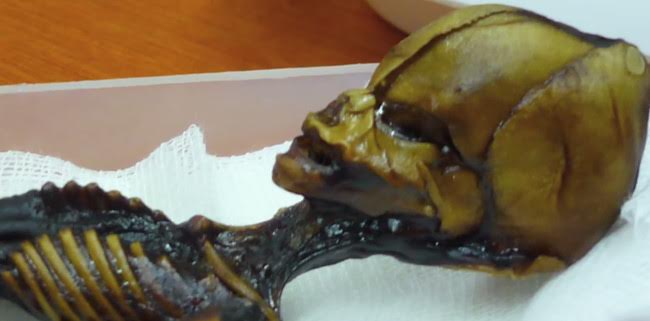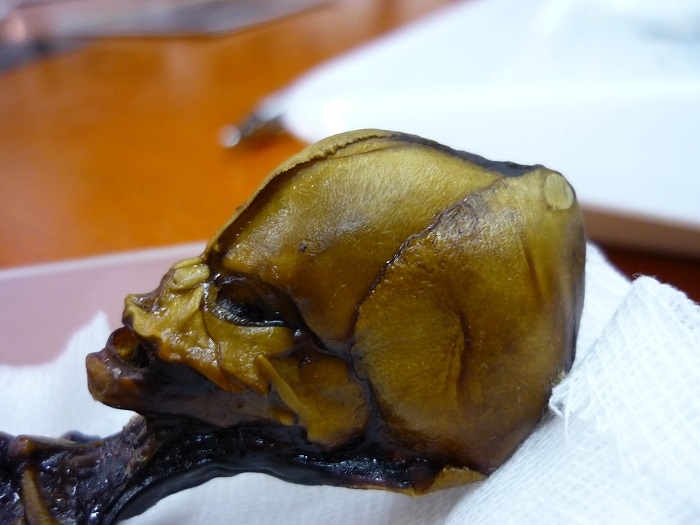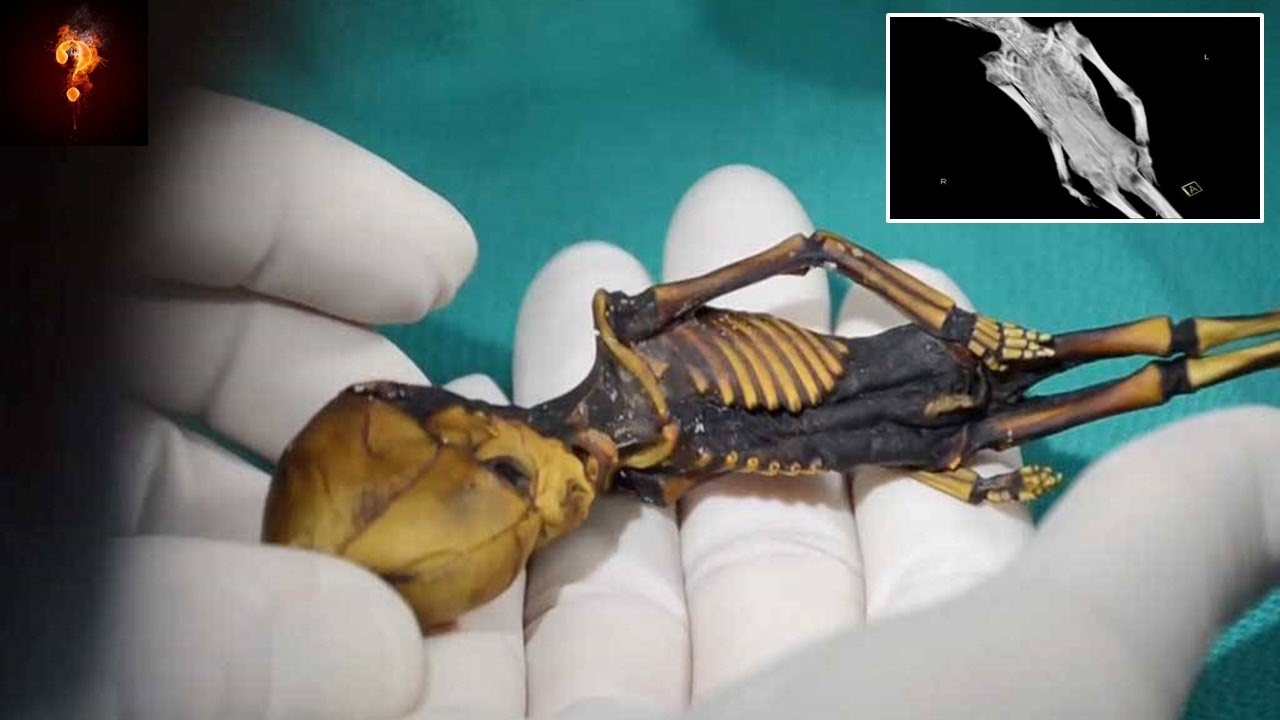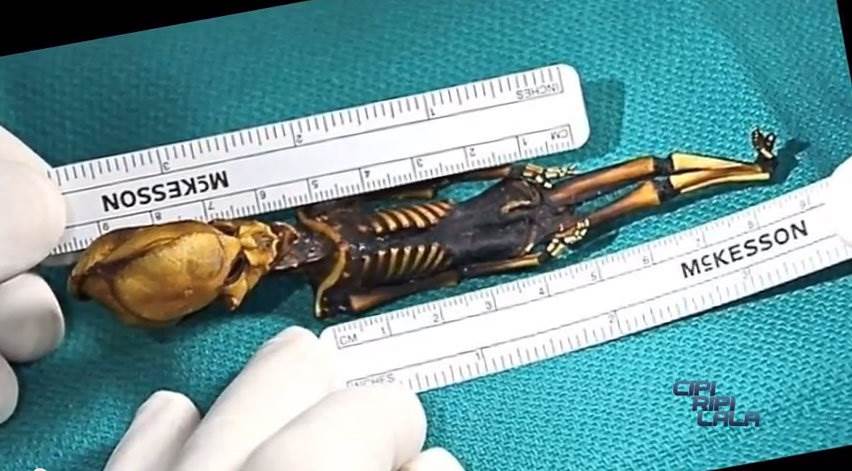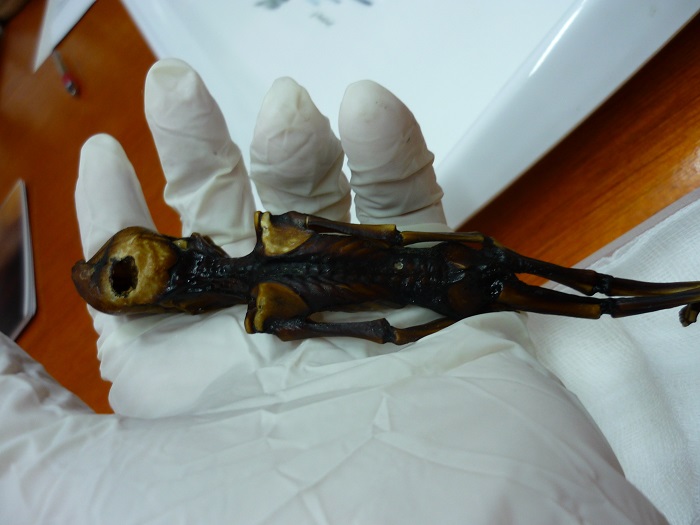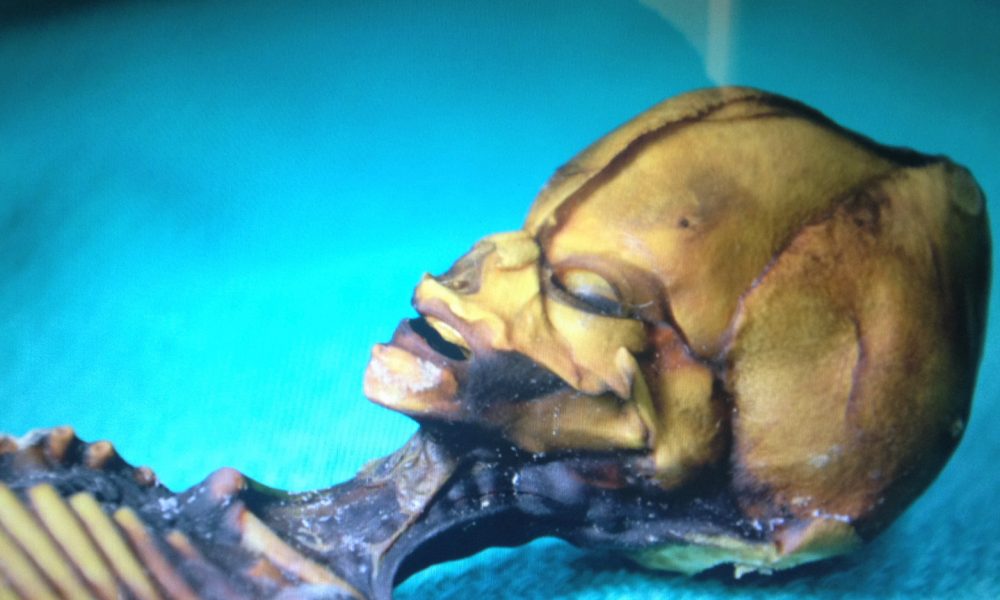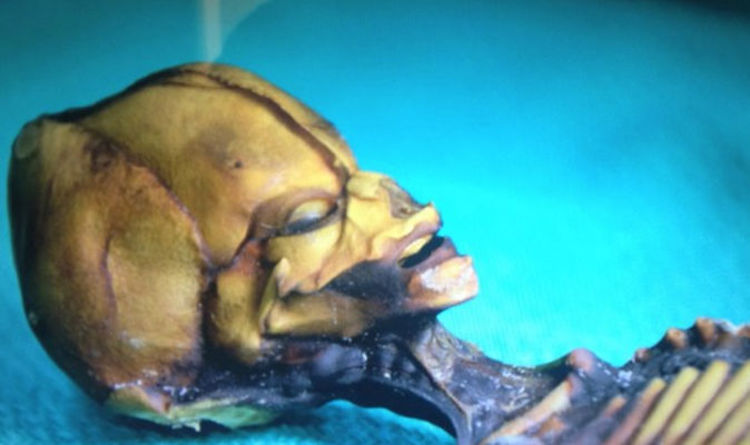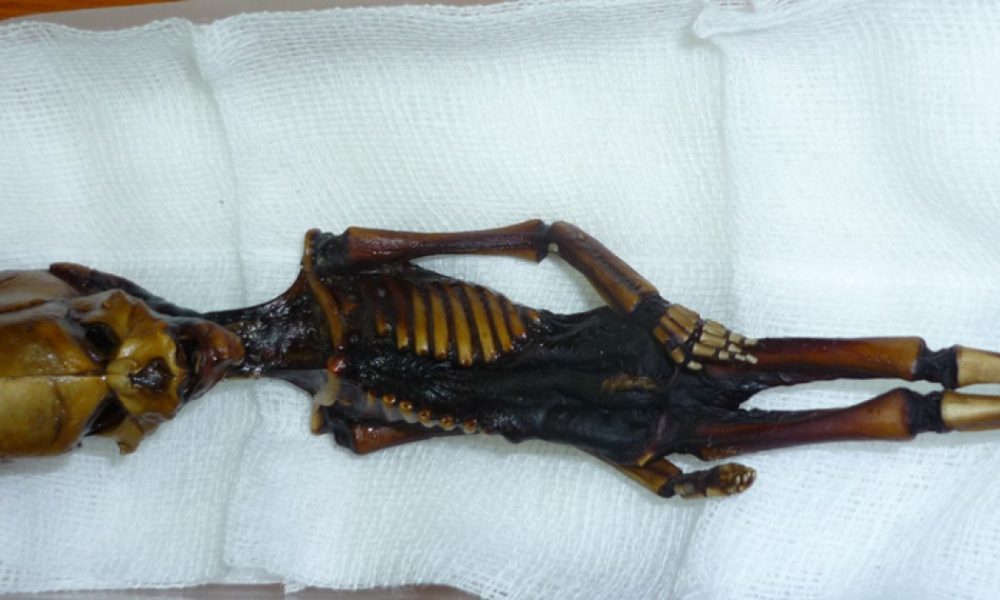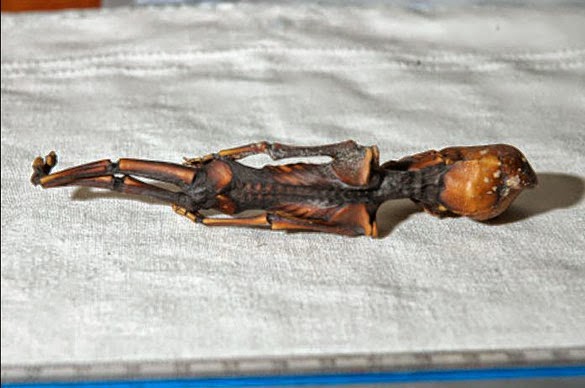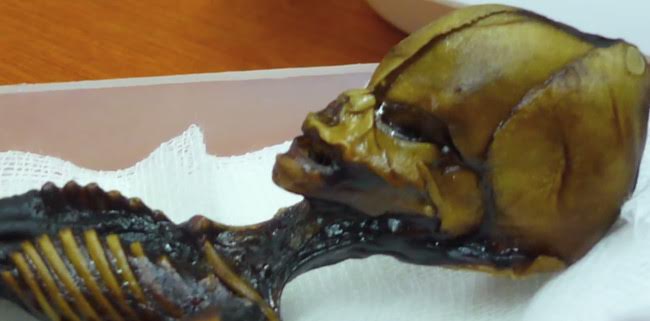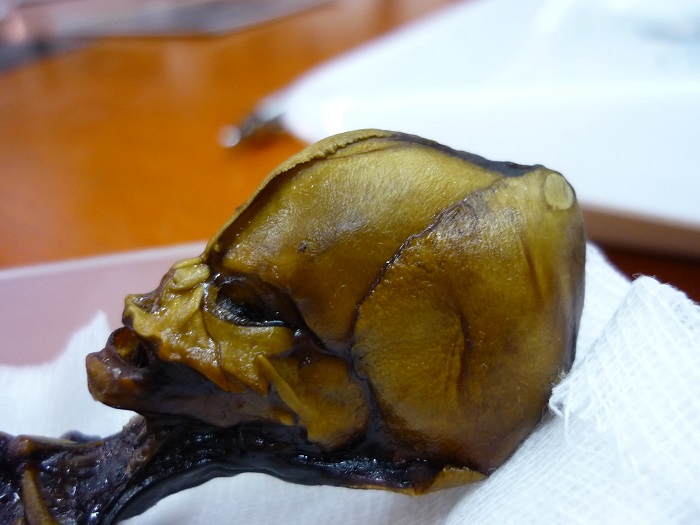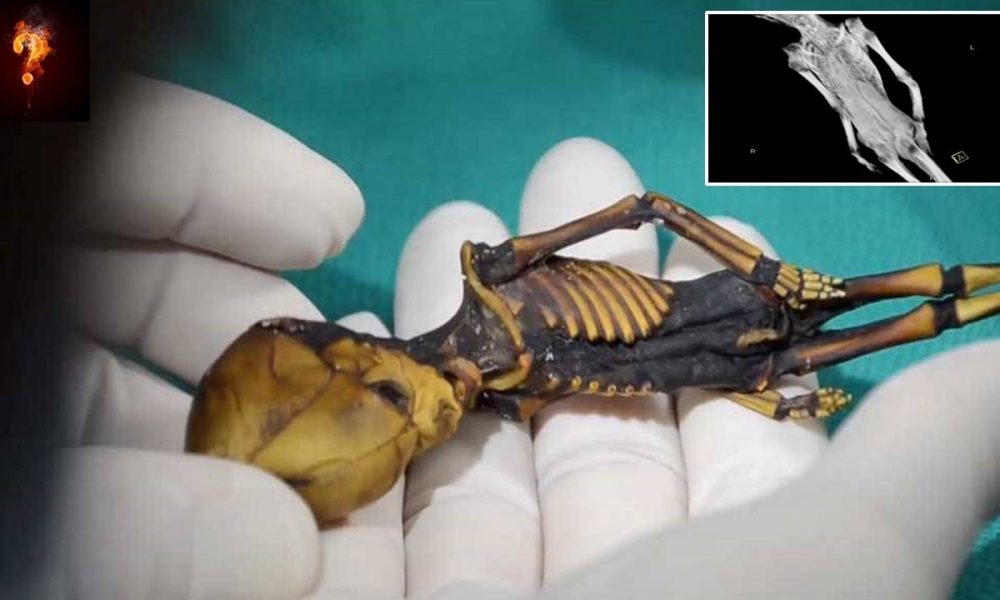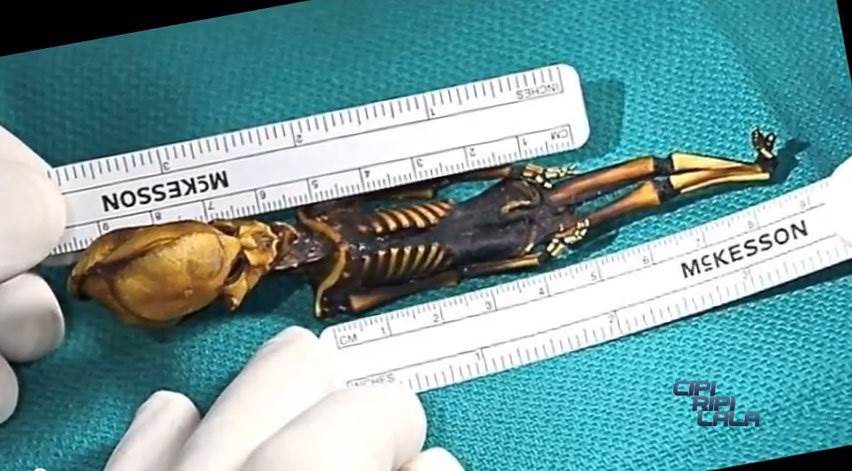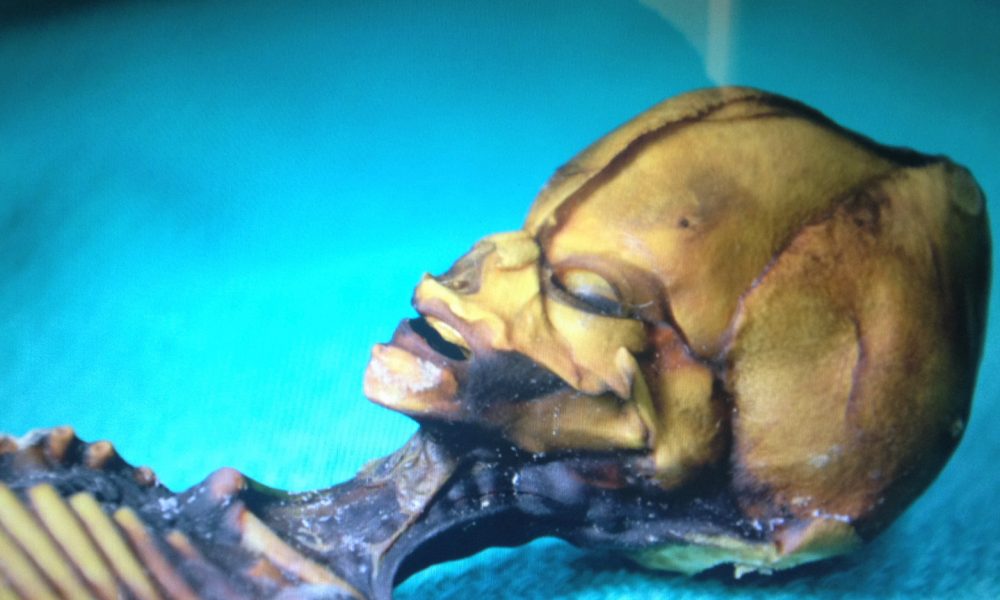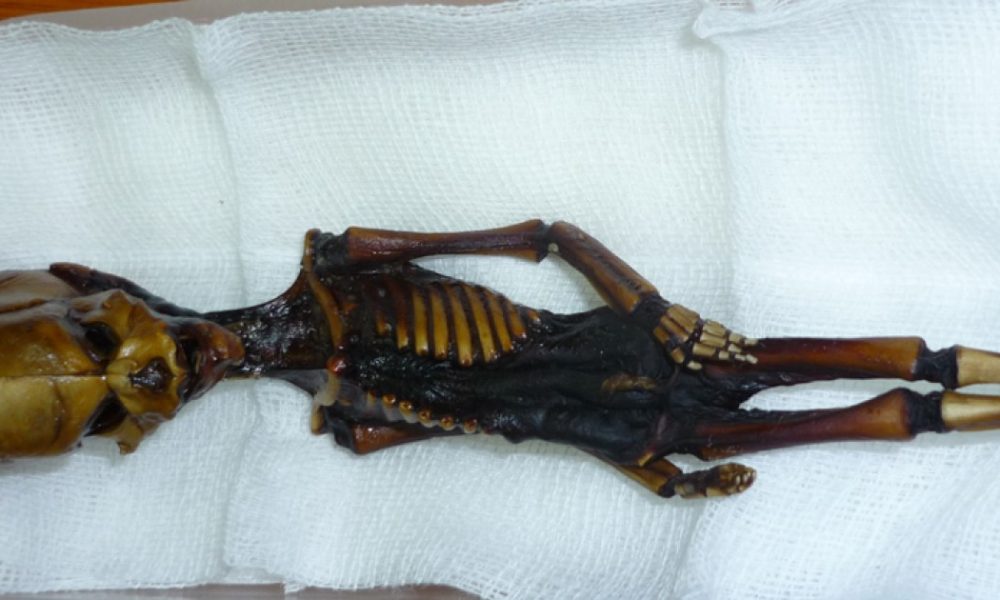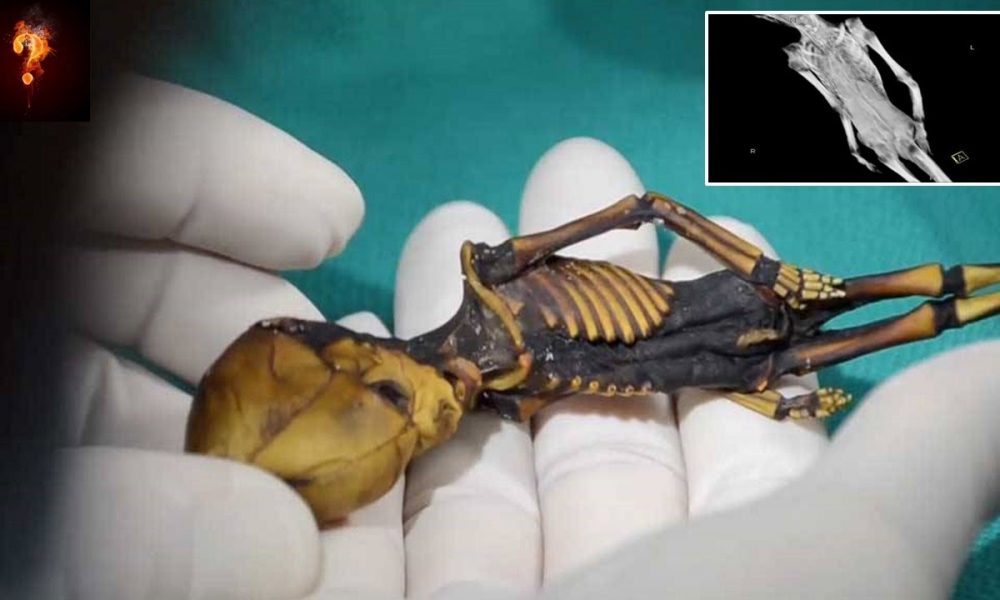Feature
Mysterious 6-inch female skeleton like of Alien found
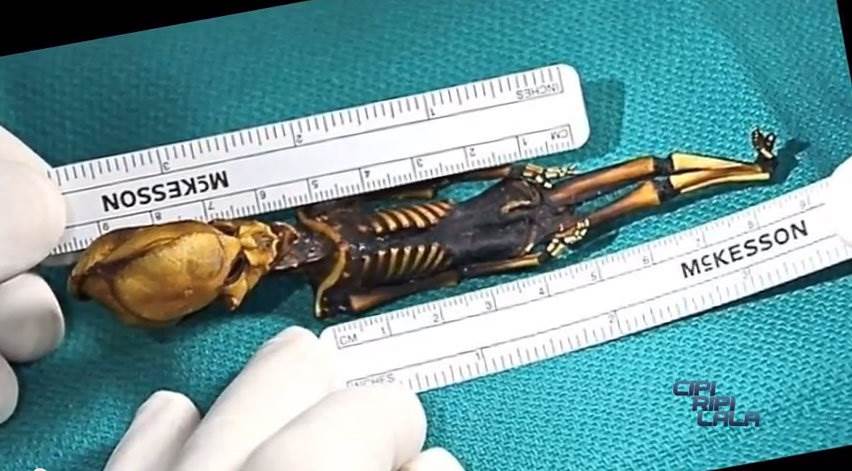
New York: Ruling out the possibility of the extra-terrestrial origin of a mysterious six-inch skeleton discovered in Chile, scientists have found that it was of a female, likely a foetus, who had a rare, bone-ageing disorder.
Discovered more than a decade ago in an abandoned town in the Atacama Desert, the mummified specimen, nicknamed Ata, started to garner public attention after it found a permanent home in Spain.
Standing just six inches tall with an angular, elongated skull and sunken, slanted eye sockets, the Internet began to bubble with other-worldly hullabaloo and talk of ET.
But the analysis by Stanford University School of Medicine scientists suggests that Ata was without doubt a human.
This was the skeleton of a human female that had suffered severe genetic mutations, according to the study published in the journal published in the Genome Research.
Ata, though most likely a foetus, had the bone composition of a six-year-old, an indication that she had a rare, bone-ageing disorder, the study found.
To understand the genetic drivers at play, the researchers extracted a small DNA sample from Ata’s ribs and sequenced the entire genome.
Mysterious 6-inch female skeleton like of Alien found in Chile:
The skeleton is approximately 40 years old, so its DNA is modern and still relatively intact.
Moreover, data collected from whole-genome sequencing showed that Ata’s molecular composition aligned with that of a human genome.
Wile a small percentage of the DNA was unmatchable with human DNA, that was due to a degraded sample, not extraterrestrial biology, said one of the researcehrs Garry Nolan, Professor at Stanford.
The genomic results confirmed Ata’s Chilean descent and turned up a slew of mutations in seven genes that separately or in combinations contribute to various bone deformities, facial malformations or skeletal dysplasia, more commonly known as dwarfism.
Some of these mutations, though found in genes already known to cause disease, had never before been associated with bone growth or developmental disorders.
Knowing these new mutational variants could be useful, Nolan said, because they add to the repository of known mutations to look for in humans with these kinds of bone or physical disorders.
“For me, what really came of this study was the idea that we shouldn’t stop investigating when we find one gene that might explain a symptom. It could be multiple things going wrong, and it’s worth getting a full explanation, especially as we head closer and closer to gene therapy,” said study co-author Atul Butte of the University of California-San Francisco.
Entertainment
Meghalaya Reserves Legalized Gambling and Sports Betting for Tourists

The State Scores Extra High on Gaming-Friendly Industry Index
Meghalaya scored 92.85 out of 100 possible points in a Gaming Industry Index and proved to be India’s most gaming-friendly state following its recent profound legislation changes over the field allowing land-based and online gaming, including games of chance, under a licensing regime.
The index by the UK India Business Council (UKIBC) uses a scale of 0 to 100 to measure the level of legalisation on gambling and betting achieved by a state based on the scores over a set of seven different games – lottery, horse racing, betting on sports, poker, rummy, casino and fantasy sports
Starting from February last year, Meghalaya became the third state in India’s northeast to legalise gambling and betting after Sikkim and Nagaland. After consultations with the UKIBC, the state proceeded with the adoption of the Meghalaya Regulation of Gaming Act, 2021 and the nullification of the Meghalaya Prevention of Gambling Act, 1970. Subsequently in December, the Meghalaya Regulation of Gaming Rules, 2021 were notified and came into force.
All for the Tourists
The move to legalise and license various forms of offline and online betting and gambling in Meghalaya is aimed at boosting tourism and creating jobs, and altogether raising taxation revenues for the northeastern state. At the same time, the opportunities to bet and gamble legally will be reserved only for tourists and visitors.
“We came out with a Gaming Act and subsequently framed the Regulation of Gaming Rules, 2021. The government will accordingly issue licenses to operate games of skill and chance, both online and offline,” said James P. K. Sangma, Meghalaya State Law and Taxation Minister speaking in the capital city of Shillong. “But the legalized gambling and gaming will only be for tourists and not residents of Meghalaya,” he continued.
To be allowed to play, tourists and people visiting the state for work or business purposes will have to prove their non-resident status by presenting appropriate documents, in a process similar to a bank KYC (Know Your Customer) procedure.
Meghalaya Reaches Out to a Vast Market
With 140 millions of people in India estimated to bet regularly on sports, and a total of 370 million desi bettors around prominent sporting events, as per data from one of the latest reports by Esse N Videri, Meghalaya is set to reach out and take a piece of a vast market.
Estimates on the financial value of India’s sports betting market, combined across all types of offline channels and online sports and cricket predictions and betting platforms, speak about amounts between $130 and $150 billion (roughly between ₹9.7 and ₹11.5 lakh crore).
Andhra Pradesh, Telangana and Delhi are shown to deliver the highest number of bettors and Meghalaya can count on substantial tourists flow from their betting circles. The sports betting communities of Karnataka, Maharashtra, Uttar Pradesh and Haryana are also not to be underestimated.
Among the sports, cricket is most popular, registering 68 percent of the total bet count analyzed by Esse N Videri. Football takes second position with 11 percent of the bets, followed by betting on FIFA at 7 percent and on eCricket at 5 percent. The last position in the Top 5 of popular sports for betting in India is taken by tennis with 3 percent of the bet count.
Local Citizens will Still have Their Teer Betting
Meghalaya residents will still be permitted to participate in teer betting over arrow-shooting results. Teer is a traditional method of gambling, somewhat similar to a lottery draw, and held under the rules of the Meghalaya Regulation of the Game of Arrow Shooting and the Sale of Teer Tickets Act, 2018.
Teer includes bettors wagering on the number of arrows that reach the target which is placed about 50 meters away from a team of 20 archers positioned in a semicircle.
The archers shoot volleys of arrows at the target for ten minutes, and players place their bets choosing a number between 0 and 99 trying to guess the last two digits of the number of arrows that successfully pierce the target.
If, for example, the number of hits is 256, anyone who has bet on 56 wins an amount eight times bigger than their wager.

